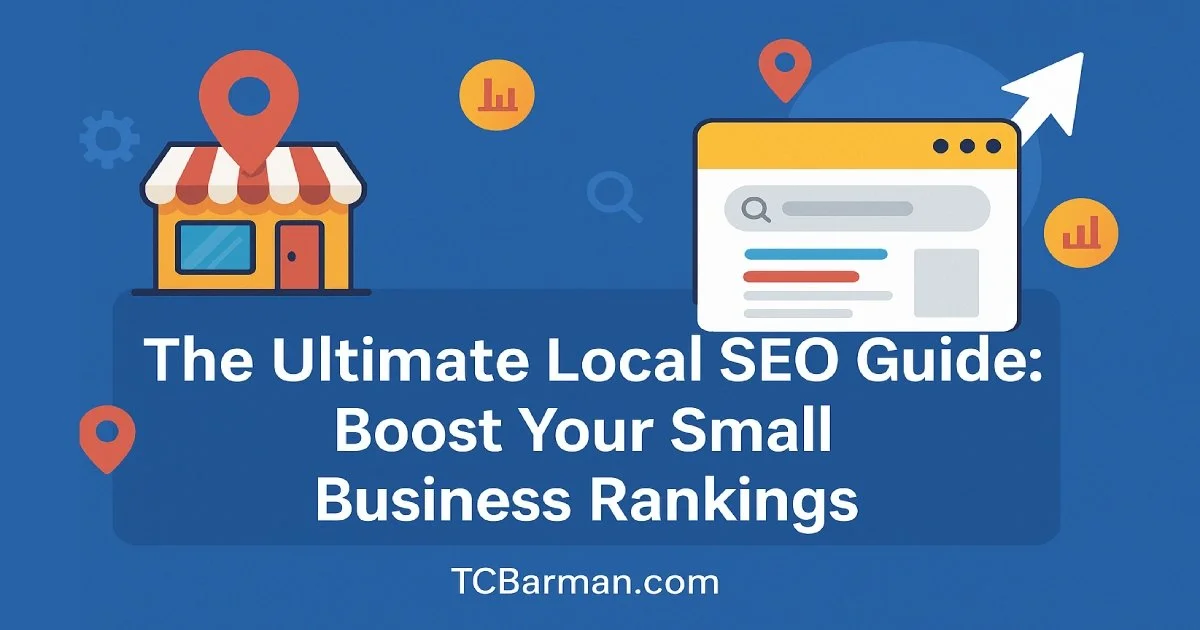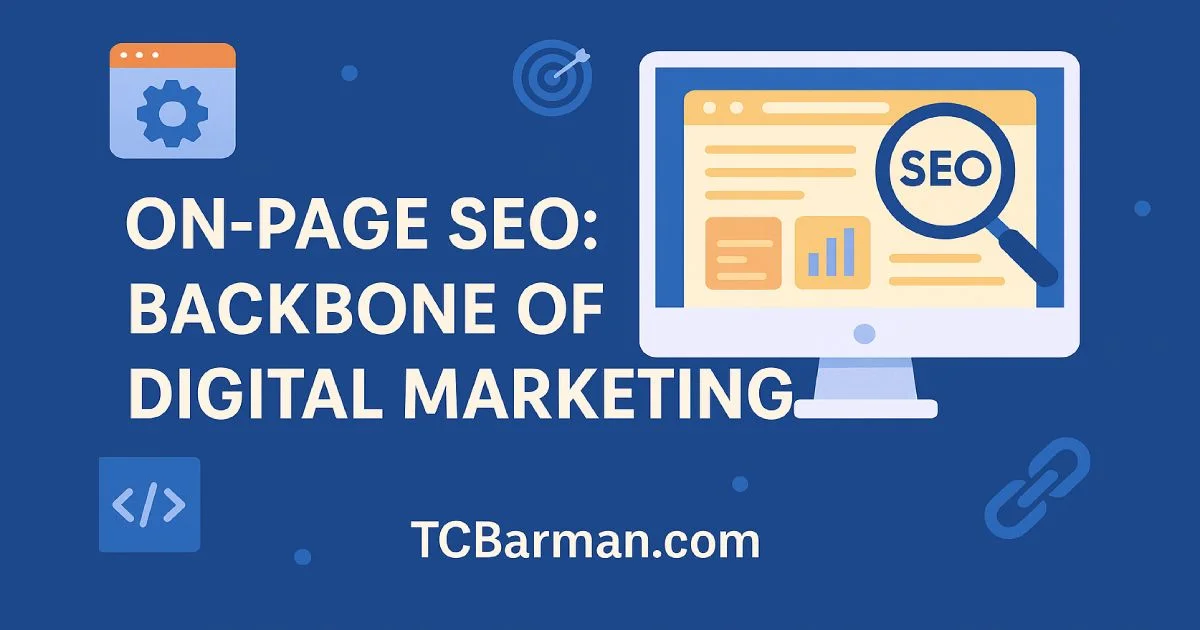If you run a small business, getting noticed by local customers online is more important than ever. With the rise of online searches, most consumers use search engines like Google to find nearby businesses. If you aren’t showing up when they look for services in your area, you could be missing out on valuable opportunities. That’s where Local SEO comes in.
Local SEO is all about improving your online presence to make sure you show up in local search results. This is crucial for small businesses that rely on local customers. Whether you're a local coffee shop, a plumber, or a boutique store, ranking well on search engines can drive more traffic to your business.
This guide will walk you through everything you need to know to boost your small business’s rankings with effective Local SEO strategies.
What is Local SEO?
Local SEO is the practice of optimizing your website and online presence so that you can show up in search results for location-based queries. For example, if someone in your area searches for “best coffee shop near me” or “plumber in [city],” you want your business to appear on that list.
In simpler terms, Local SEO helps your business get found when potential customers search for what you offer in your area. Whether through Google My Business, Google Maps, or other local directories, effective Local SEO can make a significant difference in how visible your business is to local customers.
Why Does Local SEO Matter?
Local SEO is crucial because it helps small businesses get discovered by people who are already looking for products or services nearby. The numbers speak for themselves:
- 46% of all Google searches are seeking local information.
- 78% of mobile searches for local info result in an offline purchase.
- 64% of consumers use Google My Business to find contact details for local businesses.
If your business isn’t showing up when people search for your products or services in your area, you're leaving opportunities on the table. Let’s dive into how you can improve your local search presence.
1. Claim and Optimize Your Google My Business Profile
The first step in boosting your Local SEO is claiming your Google My Business (GMB) profile. This free tool allows you to manage your business’s online presence across Google, including search and Google Maps.
How to Optimize Your GMB Listing:
Fill in every detail: Include your business name, address, phone number, website, business hours, and categories. The more complete your profile is, the better.
Choose the right categories: Picking the most relevant categories helps Google understand what your business does and shows it to the right people.
Upload photos: Photos attract customers and give them a sense of what to expect. Include pictures of your products, services, or storefront.
Get reviews: Positive reviews are a big deal for Local SEO. Ask satisfied customers to leave reviews and always respond to them, whether they're positive or negative.
2. Keep Your NAP Consistent Across the Web
NAP stands for Name, Address, and Phone number—three important pieces of information that need to be consistent across all platforms. Google uses this consistency to verify the legitimacy of your business and improve its local search rankings.
How to Ensure NAP Consistency:
- Use the same format for your business name, address, and phone number everywhere.
- Double-check that your business information matches on all listings, including Google My Business, Yelp, Yellow Pages, and more.
- Tools like Moz Local or Yext can help you monitor and maintain consistency across various directories.
3. Optimize Your Website for Local Search
Your website is the heart of your online presence, so make sure it’s optimized for local search. Below are a few essential on-page elements you should focus on:
Key Local SEO Website Optimizations:
Title tags and meta descriptions: Include your location in title tags and meta descriptions. For example, “Best Pizza in San Francisco – Order Online Now.”
Local keywords: Use keywords that combine your services and location. Instead of just saying “plumber,” say “plumber in [city].” Keyword tools like Google Keyword Planner can help you discover relevant local search terms.
Schema markup: Add local business schema to your website. This is a type of code that helps search engines understand key information about your business, like your location and hours.
Mobile-friendly design: Local searches are often done on mobile devices, so your website should be mobile-optimized and quick to load.
4. Build Local Citations
A citation is any online mention of your business's name, address, and phone number. Local citations help build your online presence and improve your search rankings. They’re essential for Local SEO.
How to Build Citations:
Submit to local directories: Start with popular directories like Yelp, Yellow Pages, and local business listings.
Industry-specific directories: If you’re in a particular industry (restaurants, health services, etc.), look for relevant directories that are specific to your niche.
Ensure accuracy: It’s important that your NAP is consistent across all of these listings. Any inconsistency can harm your rankings.
5. Get More Customer Reviews
Customer reviews are one of the most important ranking factors for local searches. Google takes reviews into account when determining the credibility and reputation of your business. More positive reviews often lead to better rankings.
How to Encourage More Reviews:
Ask happy customers to leave reviews on your Google My Business profile and other review sites like Yelp.
Make it easy by providing links to your review pages via email or social media.
Respond to reviews, showing your customers you care about their feedback, whether it’s positive or negative.
6. Create Local Content
Content marketing is an excellent way to boost your local SEO efforts. By creating content that’s relevant to your location and audience, you can rank higher in search results.
Local Content Ideas:
- Blog posts about “Top 10 things to do in [your city]” or “Best restaurants in [neighborhood].”
- Write about local events your business is involved in or that are relevant to your industry.
- Create landing pages that target specific neighborhoods or communities you serve.
By publishing local content, you not only engage with your audience but also signal to search engines that you are a local authority in your area.
7. Leverage Social Media for Local Engagement
Social media can enhance your Local SEO efforts. While social signals don’t directly impact rankings, they can help your business get noticed, build trust, and engage with the local community.
Social Media Tips for Local SEO:
Share local news, promotions, and events to engage with followers.
Use location tags in your posts so people know you’re a local business.
Encourage user-generated content, like customers posting about their experiences at your business, and repost this on your own social channels.
Final Thoughts: Start Boosting Your Local SEO Today
Local SEO is a powerful tool that can help small businesses get discovered by nearby customers. By following the strategies in this guide—claiming and optimizing your Google My Business listing, maintaining NAP consistency, creating local content, and building reviews—you can significantly improve your chances of ranking higher in local search results.
The key is to start taking action today. SEO is a long-term strategy, and it will take time to see results. But with consistency, patience, and the right approach, your small business will be well on its way to attracting more local customers and growing your online presence.


